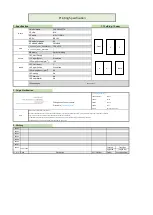
Troubleshooting
159
Poor display color or no color.
Check for proper hookup connections between your devices
The station may be having broadcast difficulties. Try another channel.
Adjust the Tint and/or Color, see
“ColorMaster™” on page 99
.
Poor composite picture.
If the TV is connected to an external A/V device (e.g. DVD player, video
game system, set-top box, etc.) try using a ColorStream or HDMI
®
video
connection instead.
Picture and sound are out of sync.
As with all products that contain a digital display, this may occur in
rare instances, when viewing certain content (e.g. television broadcasts,
video games, DVDs). The cause may include, without limitation, video
processing within the TV, video processing in an attached gaming system,
and video processing or different compression rates used by broadcasters
in their programming.
Try the following:
❖
If the TV is connected to an A/V receiver that has a programmable
audio delay feature, use this feature to help synchronize the sound
to the picture.
❖
If the problem occurs only on certain TV channels, inform your
local broadcast, cable, or satellite provider.
❖
The settings of PC/HDMI 2 Audio may be not correct. Check the
connections, see
“Connecting a computer” on page 40
.
❖
Turn off and unplug the TV from the AC wall outlet for a few
seconds and plug it back in.
Sound problems
Check the antenna/cable connections, see
“Connecting a digital audio
system” on page 35
.
The station may be having broadcast difficulties. Try another channel.
The sound may be muted. Press the
VOL (+ -)
buttons or
MUTE
button.
If you connect a computer using either the PC IN terminal or an HDMI
®
terminal, make sure that the Rear Shared Audio setting is properly set, see
“Connecting a digital audio system” on page 35
.
Sound problems
















































